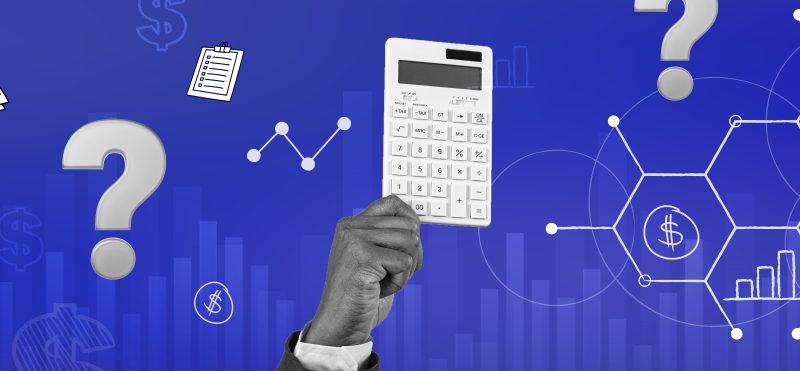Unearned revenue is a crucial concept for businesses and individuals alike, yet it is often misunderstood. It refers to payments received for goods or services that have not yet been delivered. In other words, it is money that a business has received but has not yet earned. This can include prepayments for subscriptions, deposits for future services, and retained earnings for projects that are still in progress. Unearned revenue is significant because it affects a company’s financial statements and can impact its future investments.
In this article, we will dive into the meaning and importance of unearned revenue, explore how it affects financial statements, and offer tips on how to manage it. By the end of this article, you will have a thorough understanding of unearned revenue and how it can impact your business.
What is unearned revenue?
Unearned revenue is defined as money that a business has received but has not yet earned. This might sound confusing, but it’s relatively simple. When a company receives payment for a product or service, it creates a liability on its balance sheet. This liability represents the obligation to deliver the product or service in the future. Once the company delivers the product or service, the liability is no longer outstanding, and the revenue is then considered earned.
For example, let’s say a gym offers a monthly subscription plan to its members. If a member pays for a three-month subscription upfront, the gym receives the payment but has not yet delivered the service. The gym would record this payment as unearned revenue on its balance sheet. Once the gym delivers the service, it can then recognize the revenue as earned.
Check out our article on net revenue.
Examples of unearned revenue
Unearned revenue can take many forms, but some common examples include:
- Prepayments for subscriptions: When customers pay in advance for a service, such as a monthly subscription to a magazine or streaming service, the payment is considered unearned revenue until the service is delivered.
- Retained earnings for projects in progress: When a business completes work on a project but has not yet billed the client, the revenue is considered unearned until the invoice is issued.
- Deposits for future services: When customers pay a deposit for a service, such as a wedding or event planning service, the payment is considered unearned revenue until the service is delivered.
- Gift cards: When a customer purchases a gift card, the payment is considered unearned revenue until the card is redeemed for goods or services.
How unearned revenue affects financial statements
Unearned revenue has a significant impact on a company’s financial statements. When a company receives payment for a product or service, it creates a liability on its balance sheet. This liability represents the obligation to deliver the product or service in the future.
As the company delivers the product or service, the liability decreases, and revenue is recognized. This means that unearned revenue will eventually become earned revenue, and the liability will be reduced to zero.
Unearned revenue also affects a company’s income statement. When the company delivers the product or service and recognizes the revenue, it is recorded as revenue on the income statement. This can impact a company’s reported earnings and can impact its ability to secure future investments.
Find out how financial statements help manage your business.
Recognizing Unearned Revenue
Recognizing unearned revenue can be a complex process, and it’s essential to ensure that it is done correctly. There are generally two ways to recognize unearned revenue:
- At the time of receipt. Some businesses choose to recognize unearned revenue at the time of receipt. This means that the payment is recorded as revenue on the income statement, even though the product or service has not yet been delivered.
- Over time. Other businesses choose to recognize unearned revenue over time as the product or service is delivered. This means that the payment is recorded as a liability on the balance sheet until the product or service is delivered, at which point it is recognized as revenue.
The method used to recognize unearned revenue will depend on the type of business and the product or service being offered. It’s essential to consult with a financial professional to determine the appropriate method for your business.
Read our article on accounting principles.
Managing unearned revenue
Managing unearned revenue is critical for financial planning and forecasting. It’s essential to accurately report unearned revenue to understand a company’s financial status and make informed decisions about future investments.
One way to manage unearned revenue is to monitor it regularly. This means reviewing your balance sheet regularly to ensure that unearned revenue is being recognized correctly. It’s also essential to develop a system for tracking unearned revenue, including payments received and when they are expected to be delivered.
Another way to manage unearned revenue is to forecast future revenue. This means projecting how much unearned revenue will become earned revenue over a specific period. This can help businesses plan for future investments and ensure that they have enough cash flow to cover expenses.
Common mistakes in recognizing unearned revenue
Recognizing unearned revenue can be a complex process, and there are several common mistakes that businesses make. These include:
- Recognizing revenue before it is earned. Some businesses may recognize unearned revenue as revenue on their income statement before the product or service has been delivered. This can lead to inaccurate financial statements and can impact a company’s ability to secure future investments.
- Failing to track unearned revenue. Some businesses may not have a system in place for tracking unearned revenue, which can lead to inaccuracies in financial reporting.
- Using the wrong method for recognizing unearned revenue. Some businesses may use the wrong method for recognizing unearned revenue, which can lead to inaccuracies in financial reporting.
It’s essential to consult with a financial professional to ensure that unearned revenue is being recognized correctly and that there are no mistakes in financial reporting.
Conclusion
Unearned revenue is a crucial concept for businesses and individuals alike. It refers to payments received for goods or services that have not yet been delivered and can impact a company’s financial statements and future investments. By understanding the meaning and importance of unearned revenue, businesses can accurately report their financial status and make informed decisions about future investments.
In this article, we’ve covered what unearned revenue is, how it differs from deferred revenue, provided examples of unearned revenue, explored how it affects financial statements, and offered tips on how to manage it. We’ve also highlighted some common mistakes that businesses make in recognizing unearned revenue. By following the tips and advice in this article, businesses can ensure that they are accurately reporting unearned revenue and making informed decisions about future investments.
Want to have full control over your revenue? Try Synder Business Insights – a comprehensive analytics tool connecting all your channels in use and transforming the aggregated data into actionable KPI reports. The reports are presented on a single dashboard, which acts as an all-in-one source of truth about your business, helping you make informed decisions about your sales, products and customers.
Find out the real numbers of your business by signing up for Synder’s 15-day free trial, or book office hours to get a tour of the analytics tool with a specialist. Get data-based insights to react to changes faster!












.png)
Appreciate this post. Will try it out.